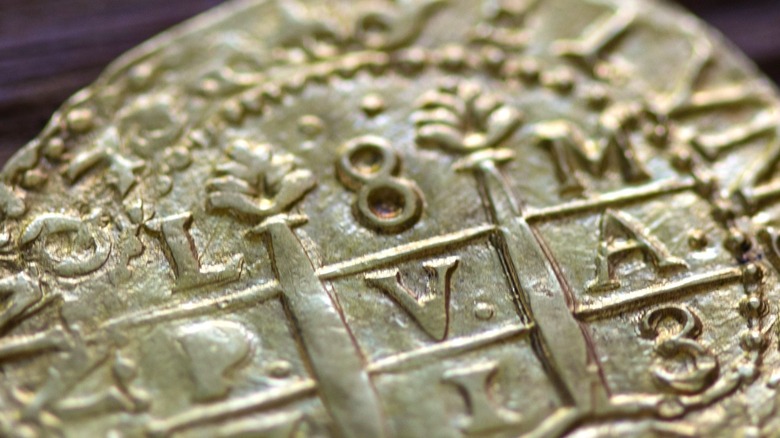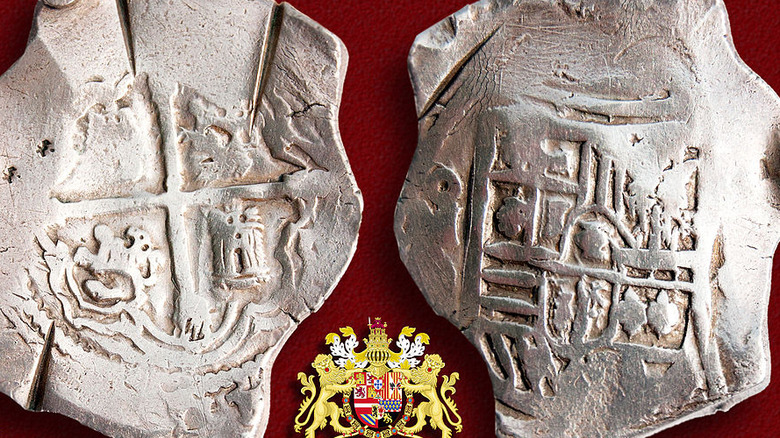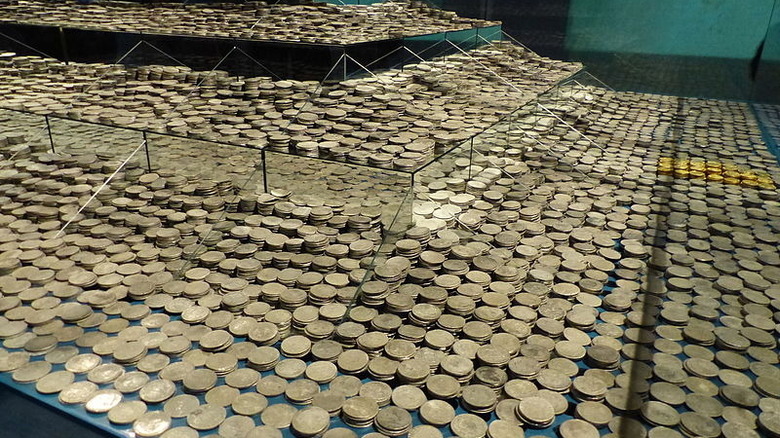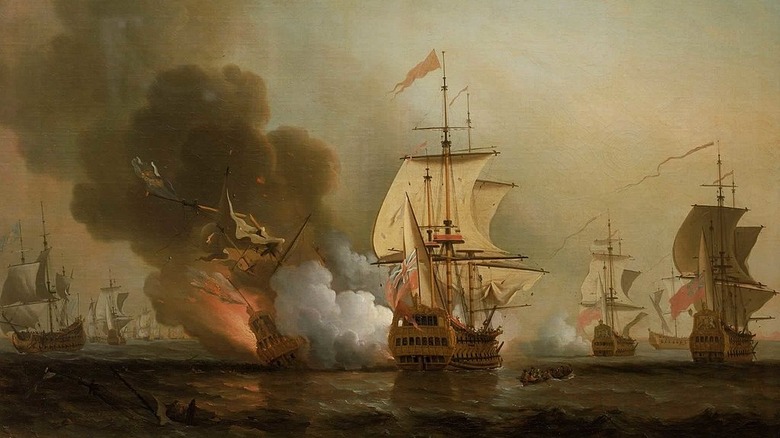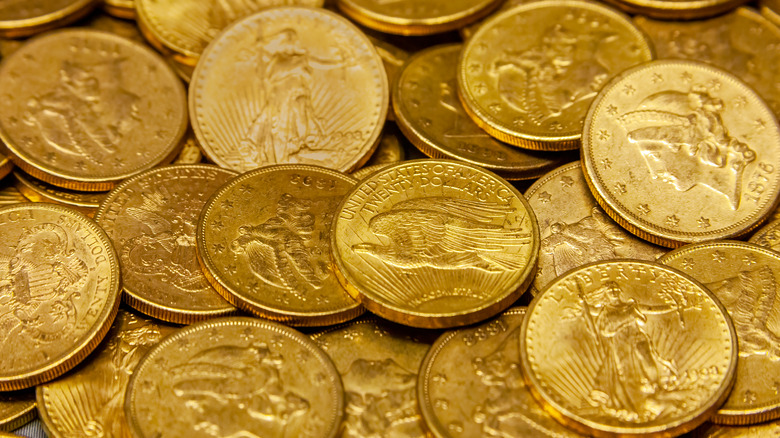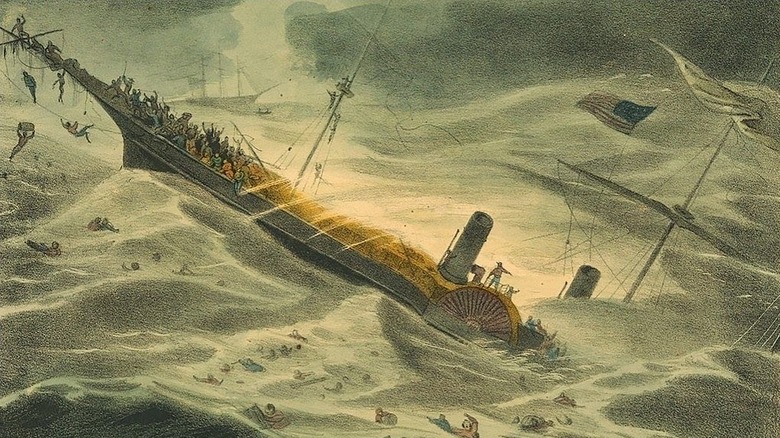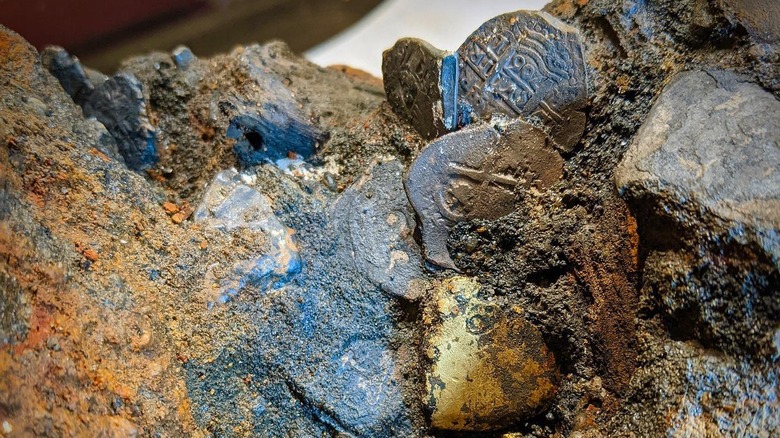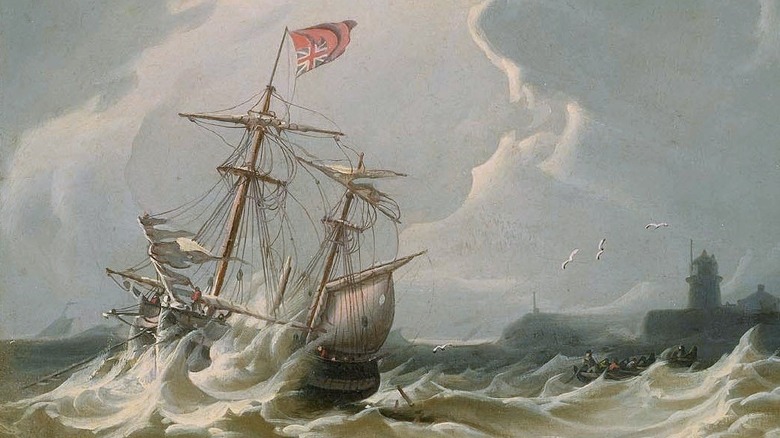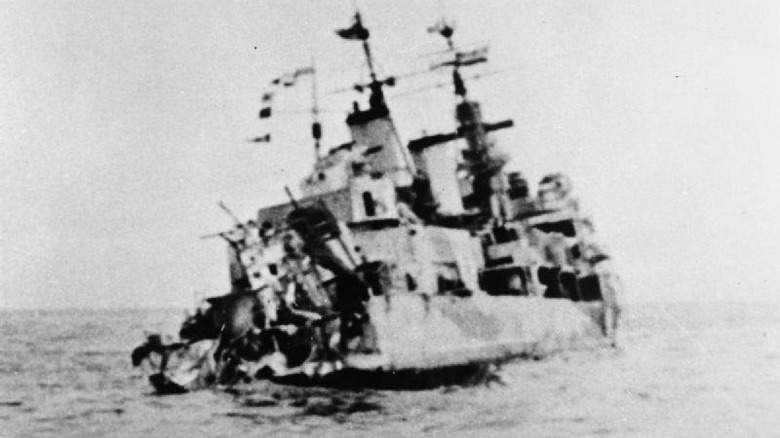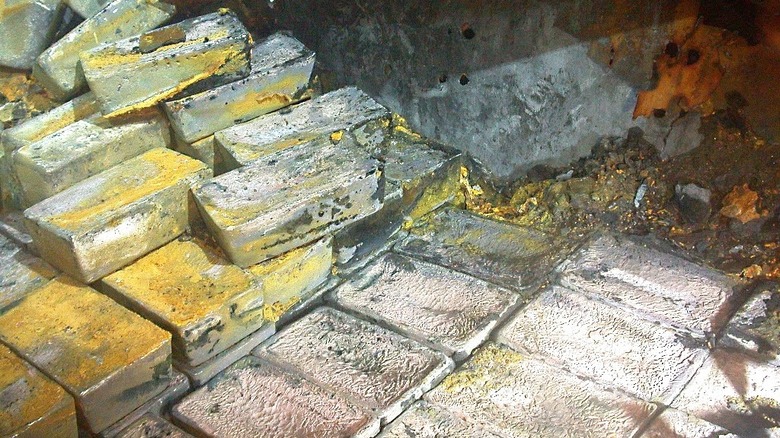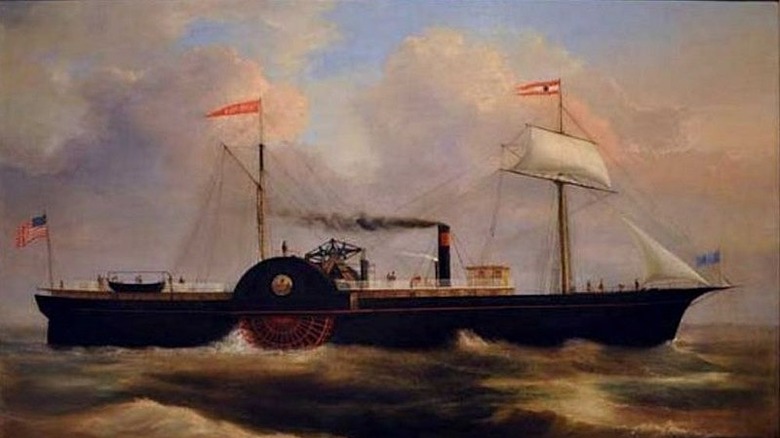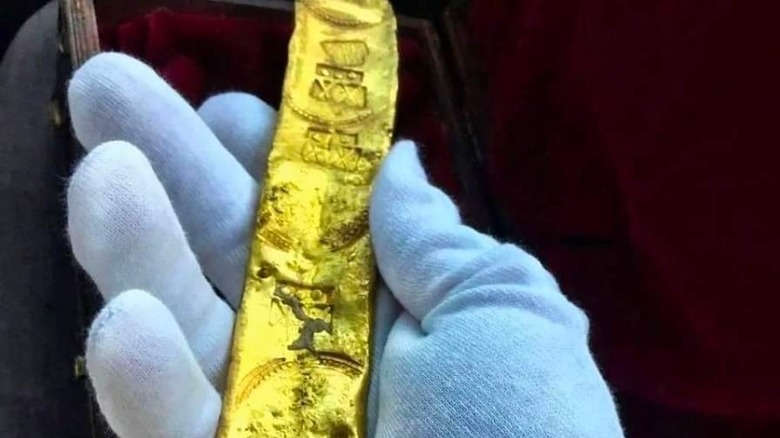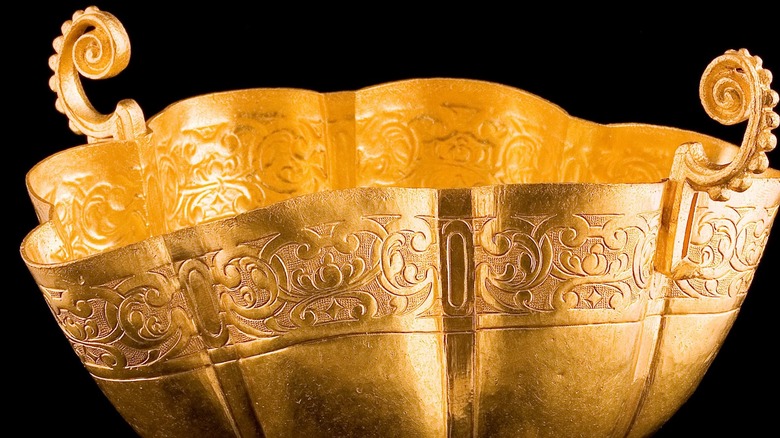The Most Spectacular Shipwreck Treasures Ever Found
The lure of sunken treasure has been part of human nature for as long as ships have plied the seas. Untold numbers of merchant ships have sunk over the millennia while sailing along their trade routes, taking many of their unfortunate crew with them. And of course, there have been innumerable tragedies at sea on passenger vessels, in which thousands have lost their lives.
But the ships that went down with gold, silver, and precious gems have always held an undeniable fascination for many. Hundreds of these sank while carrying great riches as they were on their way to market. After Spain began its almost incalculable exploitation of the New World during the first centuries of colonization, entire treasure fleets carried untold wealth across the Atlantic from the 1500s through the 1700s. Spanish experts recently estimated that 681 ships were lost to the depths over these centuries, as noted in the Guardian.
While the vast majority of ships known to have carried such loot have still not been located or explored, keeping their secret treasures with them in the deep, some of these vessels have now been discovered, with their glittering hoards brought up from the depths of the oceans. Here are the most spectacular shipwreck treasures ever found.
The 1715 Treasure Fleet
Gold and silver coins found off Vero Beach, Florida are just a fraction of the hoards from two separate treasure ship convoys called the Tierra Firme and New Spain, which once brought treasure to Spain from the Americas, National Geographic reports. The shipwreck of the Jesus de Limpia de Consolacion, or "Capitana," the flagship of what is known as the Treasure Fleet of 1715, has so far yielded no less than 52 gold coins, along with 40 feet of gold chain — giving up her riches that lie just 15 feet under the surface of the ocean near Ft. Pierce, Florida, in June of 2015.
Eric Schmitt, diving for the salvage company in charge of the wreck, 1715 Fleet-Queens Jewels LLC, has also brought to the surface a stunning gold coin known as a Tricentennial Special which is worth over $500,000, the National Geographic adds, as well as several candlesticks. According to a study undertaken by the Spanish Culture Ministry, this convoy of ships went down — as 91.2% of the vast majority of lost ships did in the New World — by way of a hurricane or other severe weather, the Guardian notes.
Nuestra Senora de Mercedes
Known as "The Black Swan Project," the spectacular discovery of the Nuestra Senora de Mercedes, a warship that was sunk by the British off Portugal in 1804 with a treasure hoard of $500 million, has been the subject of one of the greatest legal wrangles in wreck diving history, as related by History. The salvage company that finally located the shipwreck not only fought Spain — and lost — over the legal ownership of the loot it uncovered, but it also had to pay Spain $1 million for "bad faith and abusive litigation," as reported in the Tampa Bay Times.
Ships from Odyssey Marine Explorations, a company from Tampa, recovered 17 tons of gold and silver in 2007. The U.S. federal court in Atlanta ruled that Spain was the legal owner of the loot, a decision that was held up by the U.S. Supreme Court; History relates that the treasure was finally returned to Spain in 2012, and coins from the hoard are now displayed throughout museums in Spain.
Galleon San Jose
The galleon San Jose carried a total of 200 tons of gold, silver, and precious gems that were being shipped from South America to fund Philip V's war of succession against the British when she was sunk in 1708 by the British Navy during Colombia's war to establish independence from Spain. The San Jose appears to have been accompanied by at least two other coastal vessels – whose discoveries were announced in 2022 – and as many as 12 other shipwrecks may be nearby, according to Naval Commander Admiral Gabriel Perez of Colombia, speaking to the Metro.
The Colombian Navy sent a remotely-operated vehicle down 3,100 feet to survey the wreckage; its cameras showed an array of gold pieces including an ingot, as well as cannons and swords, in the remains of the wreck. Incredibly, delicate Chinese porcelain cups were also seen nearby, lying intact on the bottom of the sea as they have for more than 300 years after the ship was blown up. Experts now say that the riches in the San Jose may come to a staggering $17 billion, according to Newsweek, which notes that the San Jose is referred to as "The Holy Grail of Shipwrecks" because of the great hoard of treasure she once carried.
The RMS Republic
The RMS Republic, a 581-foot ocean liner from the White Star Line — like the Titanic, which was to set sail and sink just three years later — sank off Nantucket, Rhode Island as the result of a collision in 1909. And down with her went a reputed cargo of 150,000 American Eagle gold coins – which experts believe would be worth $1 billion today, according to History.
After raising $2.5 million to finance the expedition and finding the wreck in 1981– but exploring the wrong section of it back in 1987 — treasure diver Martin Bayerle plans to dive on it yet again with his son in an effort to finally locate the supposed hoard, the Vineyard Gazette states. The only items Bayerle recovered during the initial search were a toilet, wine bottles, and some crockery, the Gazette notes.
But, as of 2016, Beyerle remained focused on retrieving what he believes is the treasure that lies with the wreck of the RMS Republic; the U.S. District Court in Massachusetts awarded his company, called the Martha's Vineyard Scuba Headquarters, or "MAVIS," exclusive salvage rights to the shipwreck in 2005, making him the sole owner of the RMS Republic and its massive treasure — if he can retrieve it.
The SS Central America
The steamship SS Central America, carrying enormous quantities of gold from the California Gold Rush back to the East Coast of the United States, is frequently referred to as "The Ship of Gold." Tragically, 425 passengers and crew went to their graves after she was caught in a hurricane off the coast of the Carolinas in 1857. She sank carrying 21 tons of gold, worth approximately $8 million at the time, according to the BBC, which would be equivalent to an incredible $765 million today. So much wealth was on board, in fact, that its loss was enough to cause a financial panic in the United States.
Gary Kinder's "Ship of Gold in the Deep Blue Sea" relates the story of how the ship was discovered by the Columbus-America Discovery Group; their remote vehicle was lowered down to the wreckage in September of 1988 and a specially-constructed vehicle was used to retrieve some of the treasure from the SS Central America. Some of the fortune from a 2014 dive included two $20 Double Eagle gold coins, two gold ingots, and an 1857 coin minted in San Francisco.
The San Francisco Chronicle reports that one single gold bar retrieved from this shipwreck, weighing an incredible 80 pounds and selling at auction for $8 million, is the single largest gold ingot from the entire California Gold Rush. Almost all of the 7,000 ingots and coins taken from the wreckage of the ship have been sold, the Chronicle added.
The Whydah
The Whydah Gally had originally served in the infamous Triangular Trade, involving the transportation of enslaved people, molasses, and rum, before being captured by the pirate known as "Black Sam Bellamy" off Bermuda in 1717, according to the Whydah Pirate Museum, which recalls that the brigand and his 200-man pirate crew used the vessel as a base from which they raided scores of other ships all along the East Coast of the Americas, including those from England, Spain, the Netherlands, and France.
Driven aground off Cape Cod during a nor-easter on April 26, 1717, the wreck of the Whydah still lies barely 2,000 feet from the shoreline; the unstable sand surrounding it keeps most of its secret hoard intact while further exploration and research are ongoing. The ship's loot has been partially salvaged thanks to Barry Clifford, who discovered the wreck in 1984. The Whydah is the only fully-authenticated shipwreck ever discovered from the "Golden Age of Piracy," (1650-1726). As the Cape Cod Times relates, museum curator Chris Macort says each pirate had his own chest which stored his portion of the booty; he believes there may be 4.5 tons of looted treasure aboard the wreck of the Whydah, with much of it encased in concretions that have accumulated over the past 300 years. Macort and his team have uncovered many gold coins — and incredibly, even pirates' skeletons and clothing — from the ship.
The Merchant Royal
The English vessel Merchant Royal, also called the Royal Merchant, had 100,000 pounds of gold and bars of Mexican silver in her hold when she went down, making the hoard worth as much as $2 billion today, according to historian John Schmidt, speaking in an interview with WBEZ Chicago. A trader which normally plied the seas between the West Indies and Europe, she was already carrying her own hoard of an estimated 500,000 Spanish Pieces of Eight (silver dollars) before her captain took on a cargo of gold in Cadiz, Spain that was meant as payment for the entire Spanish garrison of 30,000 soldiers in Antwerp. The Merchant Royal came upon heavy weather off Cornwall on September 23, 1641; she sank "ten leagues from Land's End," her captain John Limbrey stated, as History notes.
Despite all these details, recorded at the time by Limbrey, who survived the wreck, the ship known as "The El Dorado of the Seas" has still not been found, despite one recent incident when an American salvage company believed it had finally hit upon the Merchant Royal, History relates.
In official Royal documents issued September 30, 1641, King Charles I of England states the loss was "The greatest that was ever sustained in one ship, being worth £400,000 at least." If this is true, History states that experts say the total hoard, including jewels, may be equivalent to £1 billion now.
The HMS Edinburgh
When she sank in 1942, the HMS Edinburgh had aboard her a cargo of 465 gold bars that would be worth a staggering $174,243,940 today. Meant to have reimbursed the United States for thousands of tons of war materiel as the Soviet Union fought off invading German troops, according to Dr. Michelle Blagg, a historian writing for London-based precious metals authority LBMA, the gold bars from the USSR never reached their destination after the U.S.-bound ship was hit by a torpedo from a German U-boat in the Arctic Ocean.
Despite being declared a war grave by the British government in 1957, the ship's riches were salvaged by Keith Jessop, who led two-man teams down in a pressurized Remote Operated Vehicle (ROV) to remove the gold bars in May of 1981, as he related his book "Goldfinder." The Edinburgh was called "The Salvage of the Century" after the men brought up 459 of the bars from the bottom of the Barents Sea, where the ship had lain at a depth of 800 feet, Blagg notes.
According to "Goldfinder," Jessop and his team returned 159 gold ingots, equivalent to £40 million, to Russian officials on behalf of the British government on October 8, 1981. The rest of the hoard still lies under the Arctic.
The HMS Gairsoppa
Carrying seven million ounces' worth of silver ingots from India, the HMS Gairsoppa was bound for Liverpool, England when it was struck by a torpedo from a German U-boat in 1941 some 300 miles southwest of Ireland.
The maritime salvage company Odyssey Marine Exploration, featured on the Discovery Channel in the documentary "Silver Rush," accomplished the deepest and heaviest cargo recovery in history of mankind, with 109 tons of silver bullion retrieved from the wreck that lies more than three miles under the sea — incredibly, one kilometer deeper than the Titanic, Odyssey notes.
As the periodical Mining states, new technology, including special lights, robotic claws and tools that sliced through steel decks were used for the first time in the recovery of the cargo. The hoard that Odyssey recovered from the Gairsoppa came to an astounding 2,792 ingots, weighing nearly 80 pounds each — representing not only the deepest but the largest sunken treasure recovered in the history of the world. But there likely is even more silver lying on the bottom of the sea in the wreck of the Gairsoppa; Mining notes that although 99% of the known, insured silver ingots have already been recovered, a Lloyd's of London document known as the Record of War Losses indicates that even more uninsured silver may remain in the wreck.
The SS Republic
Loaded with an estimated $400,000 in gold and silver coins, worth a king's ransom today, the Republic went down during a hurricane southeast of Savannah, Georgia, in October of 1865, National Geographic relates. Discovered only in 2003, the wreck, lying in 1,700 feet of water, contains silver that is still in mint condition, a great rarity in shipwrecks, according to Odyssey Marine Exploration's excavations director Greg Stemm in an interview with National Geographic News. The precious cargo was meant to help rebuild the economy of the Deep South after the use of Confederate money was outlawed after the War. "The first coin appeared within an hour of the first excavation," Stem told the Geographic. "I would like to think that we were that good, but there is always an element of luck in this type of endeavor."
More than 51,000 gold and silver coins were taken up from the wreck of the SS Republic, Odyssey states on its virtual museum site, along with many thousands of artifacts representing the decorative arts in the mid-1800s, including Limoges porcelain and exquisite glass lamps. And experts believe there could still be untold riches in the wreck of the Republic, whose hoard would be valued between $120 — $180 million today, according to NBC News.
The Santa Margarita
More than 166,000 Silver Pieces of Eight, or Spanish Dollars, were aboard the Spanish galleon the Santa Margarita, along with 10,000 pounds of silver and 9,000 ounces of gold — not to mention the illegal hoard which was known to have been aboard — smuggled to avoid payment of the 20% tax to the Spanish king, according to Maritime Research and Recovery, a firm specializing in the discovery of historically significant shipwrecks.
The Santa Margarita was part of a treasure convoy that fell victim to a hurricane on September 4, 1622, which also sank her companion the Nuestra Senora de Atocha (more on that in a minute), just 40 miles off what is now Key West, Florida. Captain Gaspar de Vargas desperately searched for the wreck of the Santa Margarita because her enormous hoard was equivalent to a king's ransom, Maritime Research and Recovery notes. Mel Fisher, who was to discover the Atocha nearby five years later, located the Santa Margarita in 1980.
For years, patrons of the Mel Fisher Museum could heft a foot-long bar of solid gold that he had brought up from the ship before it was stolen in 2010, as reported by WLRN Radio. The FBI's Art Crime Team is still on the lookout for the bar, appealing to the public for any leads on the bar in a tweet it sent out in 2021.
Nuestra Senora de Atocha
The legendary wreck diver Mel Fisher's discovery of a hoard of gold and other treasure worth $400 million on July 20, 1985 — including 24 tons of silver bullion and 125 gold bars — is one of the most spectacular in the history of finding sunken treasure, according to Fisher's website. One of 27 ships that were part of a convoy laden with gold, silver, and emeralds from Central and South America, the Nuestra Senora de Atocha sank during a hurricane in the Summer of 1622, off what is now Key West, the Florida Museum notes. Part of the seemingly never-ending conveyor belt of ships that transported the staggering mineral wealth of the Americas back to Spain in those centuries, the Atocha stands alone as the vessel with the richest cargo that has been partially recovered, according to Maritime Executive, which states that 40 tons of gold and silver and 70 pounds of Colombian emeralds were in her hold.
A total of 380 sailors died in the hurricane that brought down the Atocha, and Fisher tragically lost his own son, a diver, during the discovery of the wreck, but in the end, they recovered the greatest hoard in history — thus far. Fisher's Key West museum now carries out state-of-the-art conservation work on the treasures that his team continues to bring up from the site as of 2022.
